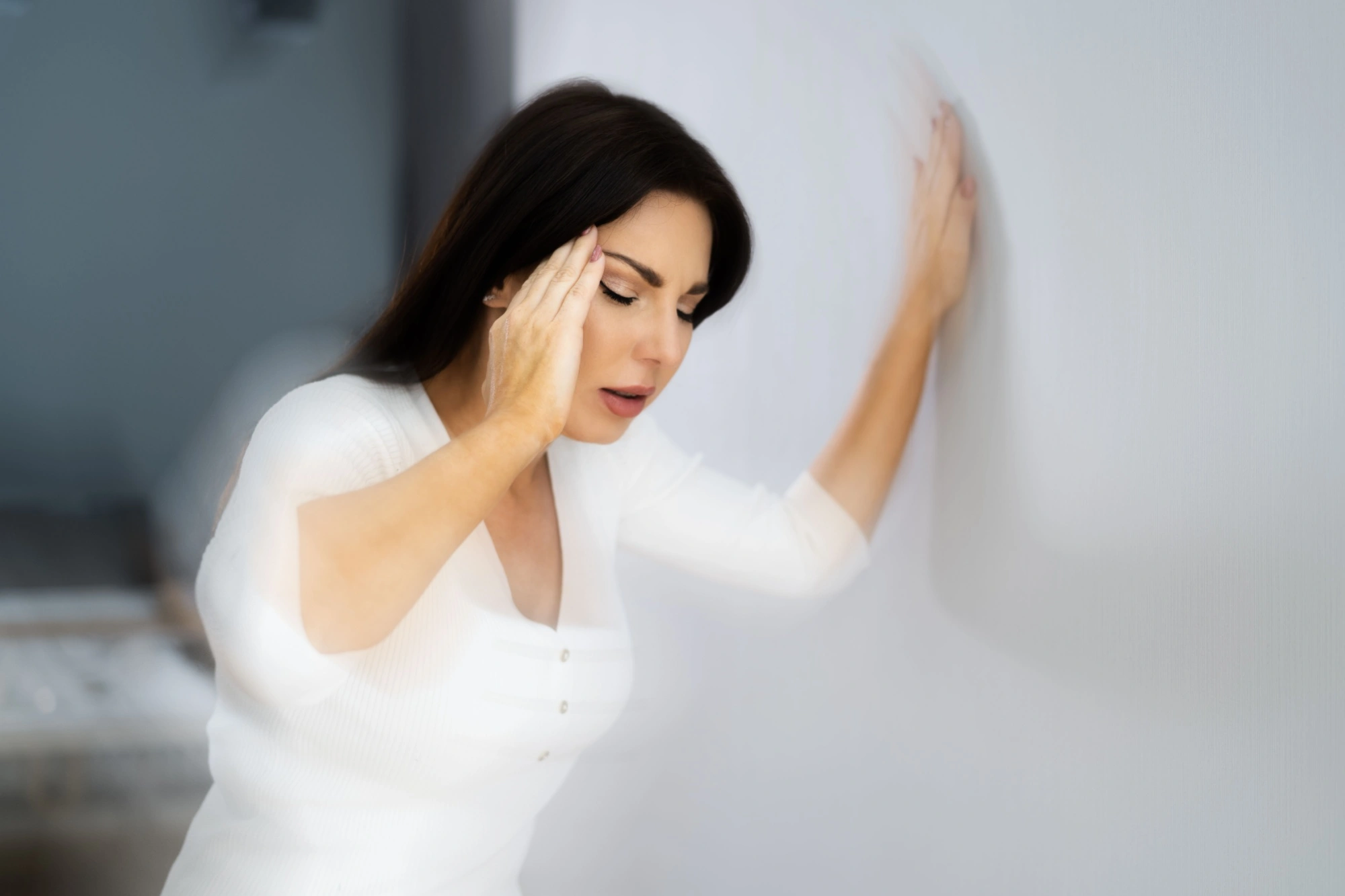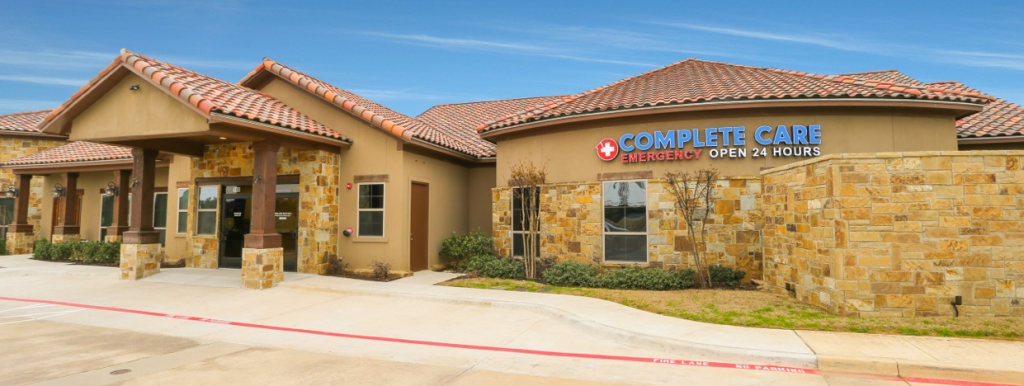Signs of Carbon Monoxide Poisoning
Poisoning
•
Dec 4, 2024

Whether you’re reading this because your carbon monoxide detector went off or you’re just feeling unwell and want to be certain, it’s important to know the signs of carbon monoxide poisoning.
This invisible, odorless gas can accumulate in any home, especially during colder months when we use heaters and spend more time indoors. Knowing which symptoms might indicate carbon monoxide poisoning could be potentially life-saving.
Early Warning Signs:
- Mild to moderate headache
- Dizziness
- Nausea
- Fatigue or sleepiness
- Shortness of breath
- Mild confusion
- Chest pain
Severe Symptoms:
- Severe headache
- Nausea and vomiting
- Mental confusion
- Loss of muscle coordination
- Loss of consciousness
- Fast heart rate
- Seizures
If you’re reading this article because you or someone around you is experiencing these symptoms right now, please don’t wait to finish reading —call 911 or head to the nearest Complete Care freestanding ER location immediately. When left untreated, carbon monoxide poisoning can cause heart problems, severe brain damage, and even death.
For those of you who are reading for preventative reasons, let’s discuss the signs of carbon monoxide poisoning and what to do if you think you have it.
1. Severe headache
A severe headache from carbon monoxide poisoning typically feels like an intense, throbbing pain that affects your whole head. This happens because carbon monoxide molecules bind to your blood cells more easily than oxygen does, stopping oxygen from reaching your brain tissue.
Your headache would be considered severe if:
- It feels different and much worse than your usual headaches
- The pain doesn’t improve with over-the-counter pain medication
- It’s accompanied by a feeling of pressure in your head
- The pain makes it difficult to concentrate or perform basic tasks
- You might describe it as one of the worst headaches you’ve ever experienced
Unlike a typical tension or migraine headache, this pain often develops relatively quickly and may worsen with mild physical activity. If you’re experiencing this type of headache along with any other symptoms listed above, especially if you have trouble breathing in, or are experiencing any nausea, dizziness, and passing out, don’t try to “wait it out” — seek emergency care immediately.
2. Nausea and vomiting
Carbon monoxide poisoning causes nausea and vomiting because your cells are being starved of oxygen, which affects your digestive system. Unlike food poisoning or stomach viruses, the left side pain and nausea that accompany carbon monoxide poisoning develop suddenly, without any digestive symptoms beforehand, don’t improve after vomiting, and often occur alongside dizziness and headaches.
Another key way to recognize this sign of carbon monoxide poisoning is if it’s affecting everyone in the same environment simultaneously.
3. Mental confusion
Mental confusion occurs during carbon monoxide poisoning because the gas directly blocks your brain’s oxygen supply. You might struggle with familiar tasks, feel disoriented about time or location, or have trouble finding the right words.
What makes this symptom particularly dangerous is that you might not realize how impaired you are, similar to how people who are intoxicated often don’t recognize their own impairment. This is why exposure to carbon monoxide symptoms can be especially deadly when people are sleeping or already confused, as they may not recognize the danger they’re in.
4. Loss of muscle coordination
Carbon monoxide poisoning can lead to loss of muscle coordination because the gas blocks oxygen from reaching the brain and muscles. This causes parts of the brain that control movement, like balance and motor skills, to struggle. As a result, a person may appear clumsy, stumble, or have trouble with simple tasks.
This carbon monoxide poisoning symptom is especially dangerous because it can make it hard for someone to move away from the source or take emergency actions, like calling for help or exiting the building. Combined with confusion and dizziness, the loss of coordination can also lead to falls or other injuries.
5. Loss of consciousness
Loss of consciousness from carbon monoxide poisoning is especially dangerous because it often happens gradually. A person may start feeling drowsy, mistaking it for normal tiredness, especially at night. This drowsiness can quickly lead to unconsciousness, leaving them unaware of the danger and unable to get help. If they’re alone, they may stay in the poisoned area, breathing in even more carbon monoxide.
6. Fast heart rate
A rapid heartbeat over 100 beats per minute at rest is dangerous during carbon monoxide poisoning because it strains the heart, which is already low on oxygen. Unlike a fast heart rate from exercise or stress, this won’t slow down with rest, as carbon monoxide keeps blocking oxygen in the blood. This can lead to chest pain, irregular heartbeats, or even heart attacks, especially in people with heart conditions.
A racing heart can often be mistaken for anxiety, but if it occurs with other carbon monoxide symptoms — especially if others around are affected — it’s considered a medical emergency that needs prompt attention.
7. Seizures
Unlike epileptic seizures, carbon monoxide-induced seizures can happen to anyone exposed to high levels of the gas. They may start with small muscle twitches or brief unconsciousness, progressing to strong muscle contractions.
This is dangerous because, during a seizure, a person can’t protect themselves, seek help, or move to safety. Seizures also increase the body’s need for oxygen when it’s already low. The presence of seizures shows severe poisoning and requires immediate emergency care, as ongoing oxygen loss can lead to lasting brain damage or death.
What is the first thing to do if you suspect carbon monoxide poisoning?
If you believe that you are experiencing carbon monoxide poisoning, you should:
- Get everyone, including pets, out of the area and into fresh air
- Call 911 and tell them you suspect carbon monoxide poisoning
- Go to the ER even if symptoms seem mild
Don’t wait. Get outside, get help, and get to treatment as fast as you possibly can. Carbon monoxide poisoning can have disastrous effects on your health if left untreated.
Will carbon monoxide poisoning go away by itself?
No, carbon monoxide poisoning will not go away by itself. Even after leaving the contaminated area, the carbon monoxide molecules remain bound to your blood cells for several hours to days. Without proper medical treatment, including potential oxygen therapy, you remain at risk for serious complications.
Additionally, the source of the carbon monoxide leak needs to be identified and fixed before returning home, or the poisoning will recur.
Experiencing any carbon monoxide poisoning symptoms? Trust your instincts and head into a Complete Care freestanding ER immediately.
Carbon monoxide poisoning is especially dangerous because its symptoms often resemble common illnesses like the flu or fatigue. However, unlike these everyday issues, signs of carbon monoxide poisoning will keep getting worse with continued exposure, leading to serious complications or even death if unnoticed.
At Complete Care, we’re equipped to handle carbon monoxide poisoning emergencies 24/7 with state-of-the-art facilities and experienced emergency physicians. Our team can provide immediate evaluation and life-saving oxygen therapy with the same level of care as a hospital emergency room but with shorter wait times and more personalized attention, whether you need treatment for carbon monoxide poisoning or campfire smoke inhalation symptoms.
Your life could depend on acting quickly, so come into one of our locations in Texas (Austin, Corpus Christi, Dallas/Fort Worth, East Texas, Lubbock, and San Antonio) or in Colorado Springs immediately if you suspect carbon monoxide exposure.
More Helpful Articles by Complete Care:
- The Dangers of Poorly Managing Stress During the Holidays
- When Does RSV Virus and Rash Appear?
- How Long Does Measles Last?
- Toxic Shock (TSS) Syndrome Signs
- What to Expect at a Standalone ER Visit
